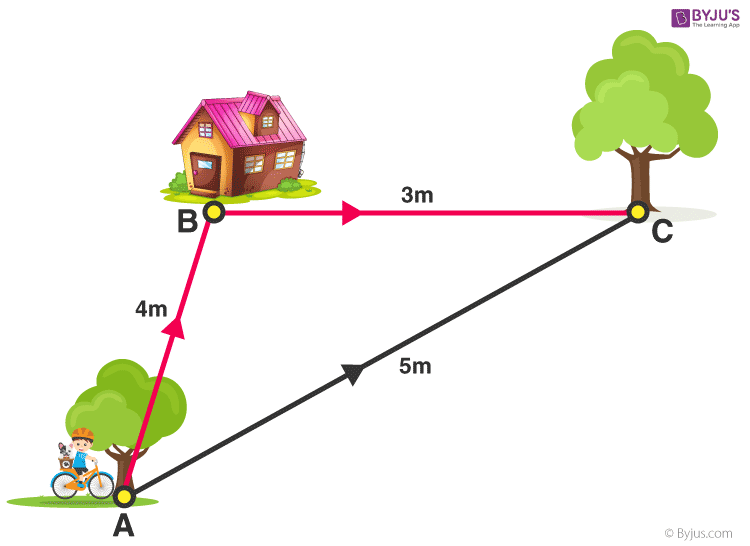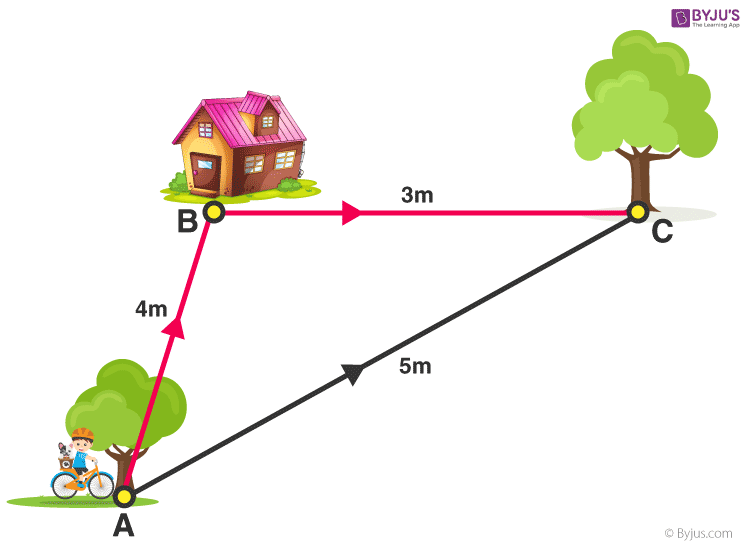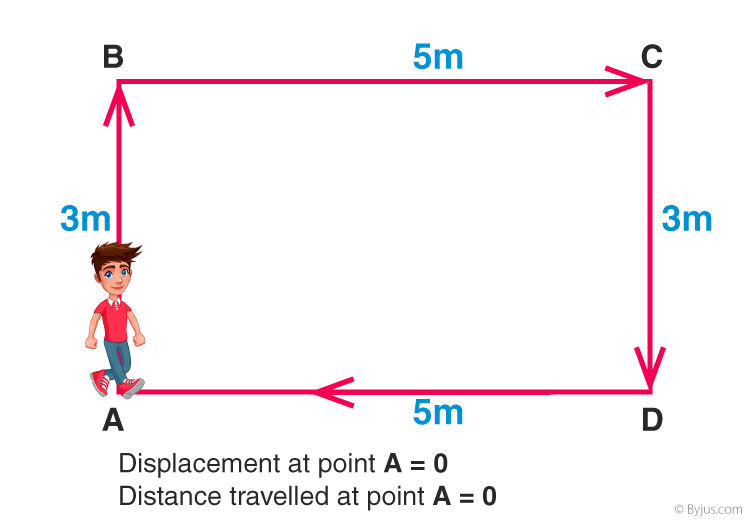Week 1. Position, Distance and Displacement.
When you Are in motion, the basic questions to ask are: Where are you? Where are you going? How fast are you getting there? The answers to these questions require that you specify your position, your displacement, and your average velocity—the terms we define in this section.
Position
To describe the motion of an object, you must first be able to describe its position (x): where it is at any particular time. More precisely, we need to specify its position relative to a convenient frame of reference.
A frame of reference is an arbitrary set of axes from which the position and motion of an object are described. Earth is often used as a frame of reference, and we often describe the position of an object as it relates to stationary objects on Earth.
For example, a rocket launch could be described in terms of the position of the rocket with respect to Earth as a whole, whereas a cyclist’s position could be described in terms of where she is in relation to the buildings she passes
Distance and displacement are two quantities that seem to mean the same but are distinctly different with different meanings and definition. Distance is the measure of “how much ground an object has covered” during its motion while displacement refers to the measure of how far out of place is an object. In this article, let us understand the difference between distance and displacement.
What is Distance?
Distance is the total movement of an object without any regard to direction. We can define distance as to how much ground an object has covered despite its starting or ending point.
Let’s understand with the following diagram

Distance here will be = 4m + 3m + 5m = 12 m
Distance Formula
Δd=d1+d2
How is Displacement defined?
Displacement is defined as the change in position of an object. It is a vector quantity and has a direction and magnitude. It is represented as an arrow that points from the starting position to the final position. For Example- If an object moves from A position to B, then the object’s position changes. This change in position of an object is known as Displacement.

Displacement = Δx=xf−x0
xf = Final Position
x0 = Initial Position
Δx = Displacement
Examples of Distance And Displacement
Question 1. John travels 250 miles to North but then back-tracks to South for 105 miles to pick up a friend. What is John’s total displacement?
Answer: John’s starting position Xi= 0.
Her final position Xf is the distance travelled N minus the distance South.
Calculating displacement, i.e.D.
D = ΔX = (Xf – Xi)
D = (250 mi N – 105 mi S) – 0
D = 145 mi N
Question 2. Julia throws the ball 30 feet North for your dog. The dog catches the ball and takes it past Julia to her brother, who is standing 5 feet to the South of where she is. Calculate the total displacement of the ball?
Answer: Julia’s initial position with the ball ( Xi) = 0.
As displacement is a vector quantity, ‘direction’ is considered. Xf = (30 feet S – 25 feet N),
so, Xf = -5 feet S.
D = ΔX = (Xf – Xi)
D = (30 ft S – 25 ft S) – 0
D = 5 ft S of Julia’s starting position
Distance vs Displacement
| Distance | Displacement |
| The complete length of the path between any two points is called distance | Displacement is the direct length between any two points when measured along the minimum path between them |
| Distance is a scalar quantity as it only depends upon the magnitude and not the direction | Displacement is a vector quantity as it depends upon both magnitude and direction |
| Distance can only have positive values | Displacement can be positive, negative and even zero |
When you Are in motion, the basic questions to ask are: Where are you? Where are you going? How fast are you getting there? The answers to these questions require that you specify your position, your displacement, and your average velocity—the terms we define in this section.
Position
To describe the motion of an object, you must first be able to describe its position (x): where it is at any particular time. More precisely, we need to specify its position relative to a convenient frame of reference.
A frame of reference is an arbitrary set of axes from which the position and motion of an object are described. Earth is often used as a frame of reference, and we often describe the position of an object as it relates to stationary objects on Earth.
For example, a rocket launch could be described in terms of the position of the rocket with respect to Earth as a whole, whereas a cyclist’s position could be described in terms of where she is in relation to the buildings she passes
Distance and displacement are two quantities that seem to mean the same but are distinctly different with different meanings and definition. Distance is the measure of “how much ground an object has covered” during its motion while displacement refers to the measure of how far out of place is an object. In this article, let us understand the difference between distance and displacement.
What is Distance?
Distance is the total movement of an object without any regard to direction. We can define distance as to how much ground an object has covered despite its starting or ending point.
Let’s understand with the following diagram

Distance here will be = 4m + 3m + 5m = 12 m
Distance Formula
Δd=d1+d2
How is Displacement defined?
Displacement is defined as the change in position of an object. It is a vector quantity and has a direction and magnitude. It is represented as an arrow that points from the starting position to the final position. For Example- If an object moves from A position to B, then the object’s position changes. This change in position of an object is known as Displacement.

Displacement = Δx=xf−x0
xf = Final Position
x0 = Initial Position
Δx = Displacement
Examples of Distance And Displacement
Question 1. John travels 250 miles to North but then back-tracks to South for 105 miles to pick up a friend. What is John’s total displacement?
Answer: John’s starting position Xi= 0.
Her final position Xf is the distance travelled N minus the distance South.
Calculating displacement, i.e.D.
D = ΔX = (Xf – Xi)
D = (250 mi N – 105 mi S) – 0
D = 145 mi N
Question 2. Julia throws the ball 30 feet North for your dog. The dog catches the ball and takes it past Julia to her brother, who is standing 5 feet to the South of where she is. Calculate the total displacement of the ball?
Answer: Julia’s initial position with the ball ( Xi) = 0.
As displacement is a vector quantity, ‘direction’ is considered. Xf = (30 feet S – 25 feet N),
so, Xf = -5 feet S.
D = ΔX = (Xf – Xi)
D = (30 ft S – 25 ft S) – 0
D = 5 ft S of Julia’s starting position
Distance vs Displacement
| Distance | Displacement |
| The complete length of the path between any two points is called distance | Displacement is the direct length between any two points when measured along the minimum path between them |
| Distance is a scalar quantity as it only depends upon the magnitude and not the direction | Displacement is a vector quantity as it depends upon both magnitude and direction |
| Distance can only have positive values | Displacement can be positive, negative and even zero |